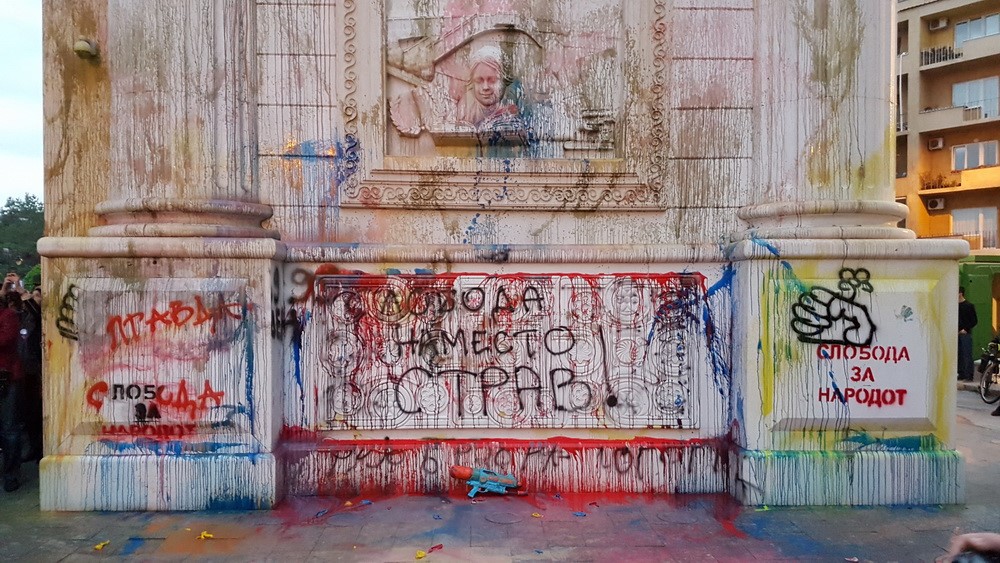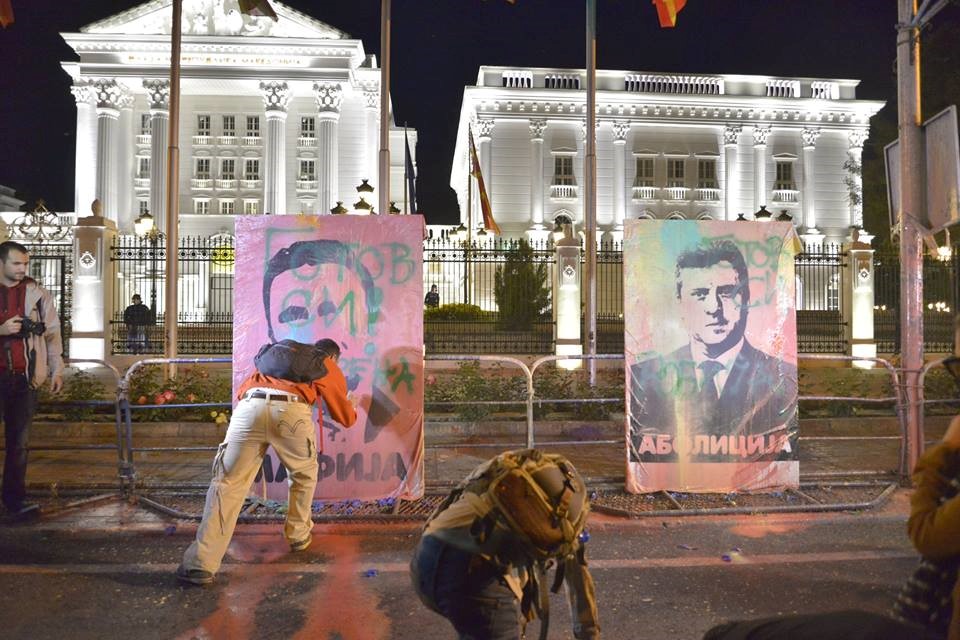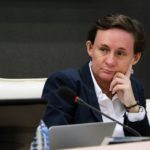Minds of the Movement
An ICNC blog on the people and power of civil resistance
by Sonja StojadinovicJune 06, 2019
The decade-long rule of the right-wing conservative party VMRO-DPMNE (2006-16) left the people and economy of North Macedonia (until last February known as the Republic of Macedonia, and internationally under the acronym FYROM) largely in ruins. Many protests for freedom from corrupt government took place, but among the most popular were those organized by the movements “I Protest” [Protestiram, Протестирам] and the Colorful Revolution in 2015 and 2016.
During these protests, people of many religions and ethnicities such as Macedonians, Albanians, Turks, Serbs, orthodox Christians, Muslims, and atheists hit the streets to fight for freedom from corrupt government and undemocratic practices under VMRO-DPMNE party rule. For years, the citizens had seen deteriorating public health and educational systems and economic emigration to Western Europe.
The release of wire-tapped conversations in March 2015 between high-level politicians that exposed corruption and nepotism among top political elites is what triggered mass protests. Subsequent political and social changes took place in the country—starting with early parliamentary elections in December 2016 and a change in party rule.
As these changes are still playing out today, the time is ripe to explore the two nonviolent movements that set them in motion.
A Brief Background of 2015 Protests
Macedonian society formed within socialist Yugoslavia, in which protests and civil disobedience were extremely rare. Following the fall of the Berlin wall, this newly formed state experienced increasing inequalities. Into the 2000s, the country’s leaders exploited increasing socioeconomic divisions, as well as existing religious and ethnic tensions, for their own political gain.
In March 2015, the then-opposition Social Democratic party made a move to expose ruling party VMRO-DPMNE corruption and provoke public outrage. In addition to leaking to the press wire-tapped conversations revealing corruption, Social Democrats managed to expose election fraud. A scandal also emerged involving a high-level minister who had attempted to cover up a police officer’s alleged murder of a young boy.
These efforts succeeded at stoking anger among the Macedonian people, and mass protests erupted, bringing us to May 2015.

Skopje, Monument Triumph Gate covered in protest graffiti, May 2016. Source: Nebojsha Gelevski.
The “I Protest” Movement (Protestiram/Протестирам)
From the very beginning, the movement participants—among whom the most active were students, intellectuals, and civil society activists—aimed to build a united front to injustice by adopting an inclusive and popular approach to organizing protests. For example, slogans they wrote on signs, stickers, banners, and so on were in Macedonian, Albanian, English, and other languages spoken in the country. The goal was to reach to people of all ethnic and linguistic differences and to organize them under the common goal to push for new political leadership and more accountable public institutions.
The “I Protest” movement, whose name emerged organically, was characterized by its use of nonviolent marches. They were planned carefully, with routes chosen for their symbolic value. The marches originated at various state institutions, depending on the dubious government activity exposed. The final destination of marches was the main government building in Skopje, symbolizing the root of all problems. Marches concluded with speeches given by intellectuals, activists, and ordinary citizens who wanted their voices and stories to be heard. Marchers expressed their positions through banners, caricatures, colorful balloons and sprays, and whistles—all deliberately playful and harmless props, in the spirit of remaining nonviolent.
The Colorful Revolution
The Colorful Revolution, whose name emerged organically from its creative use of color in street actions, was an extension of the early protests and the “I Protest” movement. Emerging in 2016, its major symbols were vibrantly colored balloons released in front of buildings where corrupt and criminal members of government held office. Many of the monuments that protesters “attacked” with colorful balloons, including the Warrior on a Horse, had been poorly built and presented an equally poorly constructed, biased history of the people in the country. With their wide variety of colors, the balloons symbolized diversity among protesters united in a struggle for an equal and free society. Demonstrators also used Facebook and Twitter to criticize the government, using naming and shaming tactics and posting caricatures.

Protesters in front of the main government building in Skopje, North Macedonia, in May 2016. Source: Vane Mihajlovski.
For both movements discussed above, the main tool for organizing and disseminating information about protests was social media, such as Facebook and Twitter. Marches were announced and organized not only in the capital of Skopje but in other cities as well, such as Kumanovo, Veles, Bitola, Tetovo, and Gevgelija. Neither movement had prominent leaders; the organizing was intentionally horizontal in order to avoid self-imposed leaders. The practice was to listen to all voices and choose the best options and ideas, and this was key considering the country’s social, religious, and linguistic divisions.
What Future for North Macedonia?
The movements, combined with political pressure from the international community, led to early parliamentary elections in December 2016 and a change in government. However, as things stand right now, little has changed in Macedonian politics. Corruption and nepotism have remained untouched, with most politicians involved still never having served jail time.
Yet there are two positive legacies of these nonviolent movements. First, people in the country have developed keen political awareness, openly criticizing corrupt elites—a previously uncommon behavior. Second, they have acquired experience and skills in organizing and mobilizing. These developments are not only remarkable, considering the country’s past; they also promising for the country’s future. The people of North Macedonia will continue to bear the torch in the struggle for an equal, democratic, and prosperous society.

Sonja Stojadinovic
Sonja Stojadinovic is an MA student in Southeast European Studies at the University of Graz, Austria. She holds bachelor and master degrees in political science and international relations, both obtained on the Faculty of Law, Skopje, University of St. Cyril and Methodius, Republic of North Macedonia. She is also an activist and well-known columnist for North Macedonian daily newspapers and regional political web sites.
Read More